The European Commission is promoting quantum computing as a core technology for European countries to cooperatively invest in and support, with a goal of establishing EU dominance in the quantum sector by 2030.
“Europe has always been at the forefront of quantum science, with a strong record of innovation and discovery,” said Henna Virkkunen, the Commission’s Executive VP for Tech Sovereignty, Security and Democracy. “We have everything we need to become a leading quantum continent, from a highly skilled workforce to a robust research infrastructure. As the global quantum race intensifies and moves from lab to real-world application, Europe must maintain its leadership.”
To that end, the European Commission has launched a Quantum Strategy, a joint initiative of EU member states to help research and develop quantum applications for public and industrial use cases.
The initiative plans to establish six quantum chip pilot lines and a quantum design facility, supported by 50 million euros of public funding earmarked for turning scientific prototypes into real-world product lines. It’s also expanding the network of Quantum Competence Clusters, which are regional hubs for collaboration and education that will connect startups, educational institutions and European companies. On the horizon in 2026 is the founding of a European Quantum Skills Academy.
Rounding out the Quantum Strategy, the Commission will draft a Quantum Technology Roadmap in Space with the European Space Agency and, reflecting EU concerns with the war in Ukraine, the initiative will contribute to the European Armament Technological Roadmap.
Europe, however, has not been at the forefront of quantum computing. Having struggled over the years to keep pace with global tech advances, it clearly runs behind the U.S. and China in the quantum sector. This despite the EU’s investment of almost 2 billion euros into quantum technologies, with member nations having invested an additional 9 billion euros. The continuing challenge, said the European Commission’s Virkkunen, is that the EU’s quantum sector is “fragile” because the various organizations and countries haven’t worked in concert.
The other problem is funding: the EU doesn’t attract much venture funding. The U.S. gets more than 50% of private funding for the quantum sector, while the EU gets a mere 5%. “This makes scaling from research to industry very challenging for our start-ups and for our companies,” Virkkunen said.
But Europe is clearly doing more than planning. The EuroHPC Joint Undertaking just unveiled its first quantum computer, housed at the Poznan Supercomputing and Networking Center, in Poznan, Poland. Operating with 20 qubits and geared to integrate with HPC machines for hybrid classical-quantum computing, it’s dubbed the PIAST-Q, named after the Piast dynasty, the first rulers of Poland.
Reflecting the urgency of the EU’s focus on quantum, the PIAST-Q’s procurement contract was inked about one year ago, so the machine was designed and built with relative speed given its complexity. Among the machine’s features, it offers all-to-all qubit connectivity, which improves stability, and also enables programmable multi-qubit quantum gates, which can operate on two or more qubits simultaneously.
The machine will initially be joined with the ALTAIR supercomputer, which is the largest HPC unit in Poland and one of the world’s top 500 supercomputers. After that, the PIAST-Q will be connected with the PIAST-AI supercomputer, which is a planned next-gen AI system to be constructed in Poland.

